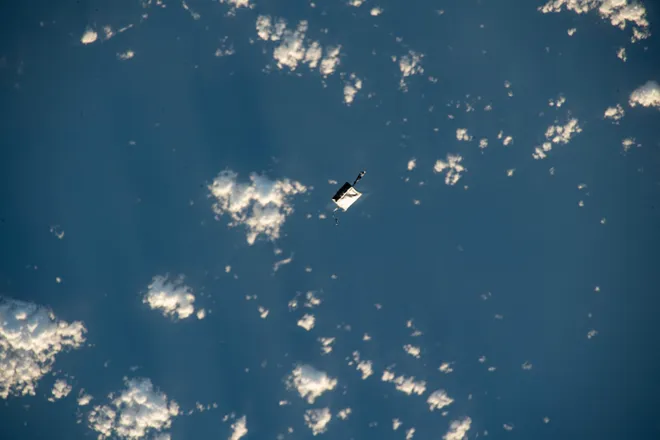Lost in space: astronauts drop tool bag into orbit that you can see with binoculars
Somewhere hurtling more than 200 miles above the planet's surface is one of Earth's newest satellites: a tool bag, and it's possible you might be able to spot it with a telescope or good pair of binoculars if you know where to look.
The white, satchel-like tool bag slipped away from two astronauts during a rare, all-female spacewalk Nov. 1 as they performed maintenance on the International Space Station, according to social media posts on X (formerly Twitter) from scientists and other experts familiar with the situation.
While there's no official word whether the tool bag contained a 10 mm socket wrench, the bag was spotted floating over Mount Fuji last week by Japanese astronaut Satoshi Furukawa. Now space junk, it has since been catalogued with the ID: 58229 / 1998-067WC.
Sadly it's not the first tool bag lost in space. In November 2008, Endeavor astronaut Heidemarie Stefanyshyn-Piper lost a grip on her backpack-sized tool kit while cleaning up a mess from a leaking grease gun, according to space.com.
That tool bag, valued at $100,000, circled the planet for months until meeting its fiery end after plunging to Earth and disintegrating. Experts believe last week's missing tool bag will share the same fate as it hurtles in the upper atmosphere, which has become increasingly littered.
As of September 2023, the European Space Agency estimates 11,000 tons of space objects are orbiting Earth. That includes up to 36,500 pieces of debris greater than 10 cm, objects that could cause cataclysmic damage if they were to hit a satellite or a rocket.
How to see the missing tool bag ISS astronauts dropped using binoculars

Spotting a suitcase-sized tool bag traveling thousands of miles an hour in the planet's thermosphere isn't the impossible task it might sound like, say avid sky watchers.
To begin, the bag is reflective thanks to catching the sun's rays and shines just below the limit of visibility to the unaided eye, according to EarthSky.org, meaning you should be able to spot the tool bag with a good pair of binoculars.
Under clear, dark skies the bag can be seen floating ahead of the International Space Station, which is the third brightest object in the night sky and looks like a fast-moving plane, according to NASA.
Fortunately, it's easy to spot if you know where to look.
You can keep track of the International Space Station online at SpotTheStation.nasa.gov or by downloading the same app on Apple or Google Play.
According to EarthSky, follow the trajectory of the ISS and scan the sky in the area just ahead of the space station. As the tool bag gradually loses height, it should appear between two and four minutes ahead of the ISS during the next few days.
John Tufts is a reporter for the Indianapolis Star, part of the USA TODAY Network. He can be reached at JTufts@Gannett.com.
Disclaimer: The copyright of this article belongs to the original author. Reposting this article is solely for the purpose of information dissemination and does not constitute any investment advice. If there is any infringement, please contact us immediately. We will make corrections or deletions as necessary. Thank you.



